The third edition of D&D was my first exposure to it and to roleplaying games in general. Although I haven't played it in years and it does a thousand things I find frustrating, but it retains a draw for me. The more I learn about other editions of the game, earlier and later, the more I find myself appreciating parts of the vision for 3e. It's a design itch I don't feel that I've fully scratched yet, so here is some work I've done in various areas towards a 3e-based hack. The one sentence pitch is like: what if third edition was more like into the odd, but it also only used d20s and d6s for some reason.
This post is not going to go into any character creation mechanics (classes, templates, feats, etc) because it's still pretty unclear to me how I'd like those to work.
characteristics
There are three stats:
- Fortitude (FOR) is your physical strength and toughness.
- Reflex (REF) is your agility, perceptiveness and quick-thinking.
- Willpower (WIL) is your intellect, lore-mastery and charisma.
Each of these can be used actively or passively. Roll 3d6 for each, in order. The active rating is half the total (rouded down), while the passive rating is the lowest die.
(I know I literally published reverse dragonball stew (which uses the stat system I had intended to use here) only a few days ago, but it was percolating for a while before I finished it and at least for the moment I'm cutting the six stats down to three.)
To succeed on something that needs a roll, you must roll a d20 under or equal to the relevant active rating plus all ranks in relevant skills. If this is a roll against an obstacle (like a foe's passive rating), your roll must be higher [not equal to] the relevant obstacle or defense rating. If this is an opposed roll and your opponent rolled under or equal to their total, you must roll under or equal to your total but higher than their roll.
Skills trained from an experienced teacher when you have time to do so start at 3 ranks. After returning to safety from an adventure, you may choose up to three skills you used (or tried to use) during the adventure. Roll 2d6 for each; if the total is greater than your current rank in that skill, gain 1 rank in it.
nerve
All characters have a reserve of bravery, trickery and just dumb luck called nerve. A character's maximum nerve is equal to the sum of their three passive characteristics. Until they run out of nerve, characters should not suffer serious injury but rather near-misses, glancing blows, bruises and grazes.
A serious blow costs d6 nerve. An awkward one, the lower of 2d6 and a deadly one the higher of 2d6. Only something that should kill an ordinary person where they stand costs 2d6 or more nerve.
If you run out of nerve, the remaining damage of a blow is deducted from one of your active ratings (usually whichever one was attacked). If this reduces an active rating to zero or if they fail their saving throw (d20 under injured rating + level), they are critically injured.
Characters who are not strained may recover up to 1 point of nerve lost since their last break by taking a short break and a bite of food or swallow of water. Resting for the night lets one regain up to 2 points of nerve lost the previous day, or all lost nerve when resting in a safe place. Injuries that are not field-dressed can take a turn for the worse (save against critical injury every other night) but can only properly recover during an longer period of rest in a safe place.
If an attack reduces your nerve to exactly 0 but no injury is done, it is a nasty-looking but shallow wound that leaves scar. Roll a d6; if it is higher than the passive rating that was just attacked, increase that rating to the roll, your maximum nerve by the difference and the active rating by half the difference, rounded down. Only attacks can trigger these increases (other reasons you spend or lose nerve do not count), but attacks whose after-nerve damage is reduced to zero by armor do count.
You may easily carry no more burdens than your active Fortitude. Anyone carrying more than this has their movements are slowed and is strained (you cannot regain nerve at breaks). Up to about 12 pounds of gear, loot or supplies can be tied into a pack that takes up one burden, at the cost of easy access. When not bundled, gear is twice as burdensome. Anyone carrying two or more bulky objects is encumbered, greatly reduced in speed and takes injury from attacks even if they have nerve remaining; they are unable to use nerve until they put down their load.
(These rules, probably obviously, owe their inspiration to Chris McDowall's Into the Odd/Electric Bastionland.)
combat
(The beating heart of the d20 system is its byzantine action economy, for which I feel a mixture of dread and fascination. Here's my attempt to adapt it. More actions will probably be added.)
Combat rounds are approximately 10 seconds. Every round, the Referee telegraphs the actions of the players' enemies. Players may take initiative with a REF check (use brawling/fray/soldiering/etc skills) or bide their time. Those who successfully take initiative may interrupt enemy actions with their own, while those who bide their time or fail initiative may not. Biding your time is good for a +2 bonus if you need to roll this round. (This initiative is based on this post of Chris M-S.)
Humanoid characters may take no more than one leg action and one arm action per round. They can be taken in any order. Some actions (f.e. casting a spell) count as both, and take up one's entire round. (There are probably more actions than this, but here's a start.)
- Leg Action: moving.
- Arm Action: fighting hand-to-hand, firing missiles.
- Full Round: running flat-out, casting a spell.
You can't run flat-out while holding anything of weight in your hands. Rate is half again your normal movement.
If characters are fighting one-on-one, hand-to-hand fighting is an opposed roll, on which whoever has a longest reach gets a +2 bonus if they have room to use it. If the fighting isn't one-to-one, attacks are made as separate checks against the defender's passive characteristic (or armor rating), from the longest reach to the shortest.
Any action that leaves an opening (withdrawing, firing missiles, trick attacks, casting spells) costs 1 nerve for every menacing foe that can reach you. Armed combatants menace unarmed ones. Creature twice your size or more are always menacing, and no creature half your size or smaller can menace you.
(This rule for menace replaces attacks of opportunity, and derives from the idea of pressure from the OLOG.)
Anyone attacking a foe twice or more their size adds 1 to their skill for every time their target doubles their size (2 for quadruple, 3 for octpuple, etc) but reduces all damage dealt by the same amount. Anyone attacking a foe half or less their size deducts 1 from their skill for every time they double their target's size but increases damage dealt by the same amount.
arms and armor
Weapons, in order of length:
| Weapon | Type | Burdens |
| Unarmed | blunt, awkward | n/a |
| Dirk | piercing, two-handed | none |
| Knife | edged, two-handed | 1/3 |
| Handaxe | edged | 1/3 |
| Cudgel | blunt | 1/3 |
| Sword | edged | 1 |
| Halberd | edged, versatile | 2 |
| Maul | blunt, hafted, two-handed | 2 |
| Bill | edged, hafted, two-handed | 1 |
| Spear | piercing, hafted, versatile | 1 |
A steel-headed mace is as a cudgel, but constitutes 1 burden and is deadly against the unarmored. Daneaxes and so forth count as bills, and warhammers count as maces (if one-handed) or mauls (if two-handed).
- Awkward weapons deal the lower of two d6 damage.
- Deadly weapons deal the higher of two d6 damage.
- Hafted weapons are awkward against enemies in a close press.
- Two-handed weapons are awkward when used one-handed and deadly when two-handed. (Using a dirk or knife two-handed means seizing one's foe with one's free hand.)
- Versatile weapons may be used with one or two hands and are deadly when two-handed. When used two-handed, their reach is lesser than when one-handed.
Weapons longer than a knife cannot be packed, weapons longer than a sword cannot be worn on the belt.
Suits of armor have an armor rating. When fighting one-to-one, you may use your armor rating instead of your weapon skill if it is higher, and many-to-one attackers use the higher of your armor rating or passive rating as an obstacle when attacking you. Armors may also reduce injury (after nerve is used up) from certain attacks:
- Light Armor (layered textile or leather; 1/3 burden, AR2) reduces injury from edged weapons (including teeth and claws) by 1.
- Mail (lamellar or chain; 1 burden, AR4) reduces injury from edged weapons by 2 and piercing by 1.
- Plate (transitional or full harness; 2 burden, AR6) reduces injury from edged weapons by 2, blunt force by 2 and piercing by 1.
Armor can be layered. Use the best armor rating of any layer, but similar damage reductions stack; a warrior in full harness is functionally immune to edged weapons. (The defensive bonuses of shields and of two-weapon fighting are still TBD).
A hard helmets provides 1 point of protection against physical attacks. Your best source of protection raises whatever rating is used for your defense (passive or armor) by that many points.
(These armor rules are largely derived from this post by Skerples, though the weapons owe more to the following posts of Brendan, Xenophon and Ben L.).
reaction rolls
For sensible strangers who are neither bound by custom (f.e. hospitality) nor have reason to jump to violence (f.e. armed intruders in their home), the Referee secretly rolls 2d6 for their patience. Characters with patience of 5 or less will be clearly untrusting, while those with 10 or more patience will be impressed in some way.
If the players make a request or proposal, they lay it out in character. It costs 1 nerve to intentionally conceal a relevant fact and 1 nerve to deliberately lie. The Referee adjusts the chance of success from a base of 1-in-6 but +2 if they feel the players have offered something this character genuinely wants and/or +2 if they feel they have played to one of this character's genuine fears. If they do not immediately accept, reduce their patience by the number rolled; at zero patience, communication breaks down (and violence may follow). Otherwise, if the players wish to press their case, they must change some part of the proposal.
(I rather like the above procedure based on W F Smith'shostile negotiations. The only part I don't like is that right now there's no clear way for WIL to play into things.)
prior art
Not direct sources of any particular part, so much as a similar things that have been on my mind with regard to this hack:
- Dan Collin's diminutive d20, which hews much closer to the SRD than I care to but is a laudable exercise in compression.
- Arnold K's 2014 pre-GLOG rules writeup being something of an intermediary position between a stripped-down E6-style 3.x and the fecund abundance of the GLOG itself.
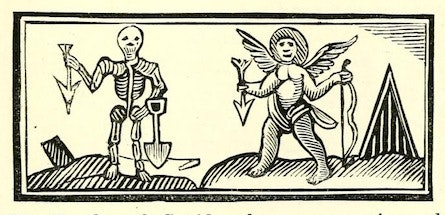
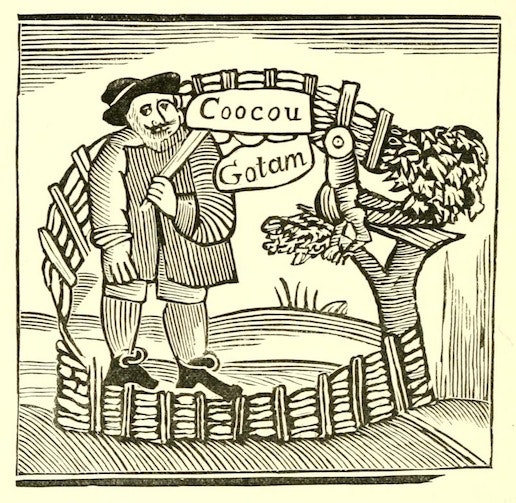
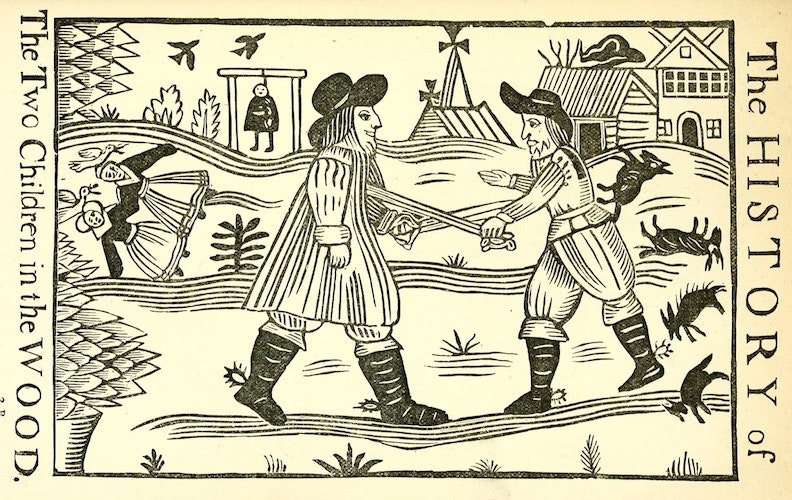
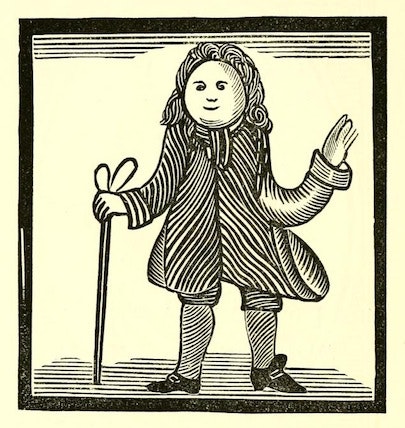
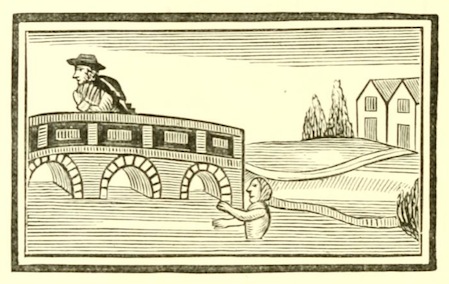
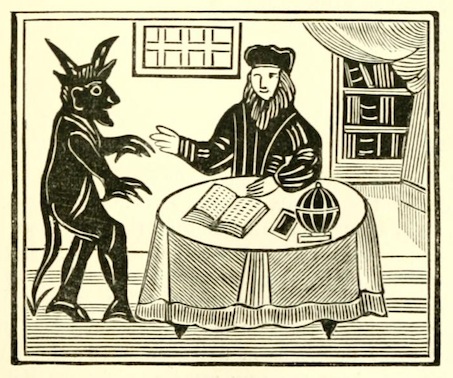
No comments:
Post a Comment